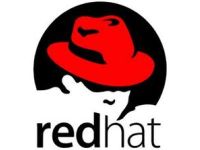

Red Hat released the beta version of its flagship Red Hat Enterprise Linux 7.5 (RHEL) server operating system on Jan. 24, providing an early look at multiple new features that will become generally available later this year.
Red Hat’s last major milestone update for RHEL debuted in August 2017 with the general availability of RHEL 7.4, which added new cluster management capabilities as well as support for Network Bound Disk Encrypted (NBDE) devices.
Steve Almy, principal product manager for Red Hat Enterprise Linux, told ServerWatch that NBDE support added in RHEL 7.4 enabled organizations to ad security without administrative cost to unlock LUKS-encrypted boot volumes and enable a system to boot.
NBDE support added in RHEL 7.4 enabled organizations to ad security without administrative cost to unlock LUKS-encrypted boot volumes and enable a system to boot.
Almy explained that while on a local, trusted network, boot volumes are decrypted without manual intervention, if drives are removed from the local network, the decryption keys are no longer available and the data is protected from misuse.
“In Red Hat Enterprise Linux 7.5 Beta, NBDE extends this capability to data volumes,” Almy said. “With this enhanced capability, the hands-off encryption and decryption can be extended to data volumes, allowing increased data security without added administrative burden.”
RHEL 7.5 also adds an “automated creation of a known-good bootable snapshot” capability. Almy explained that the bootable snapshot capability in Red Hat Enterprise Linux 7.5 Beta is provided at a layer in the storage stack lower than the filesystem.
“With this capability in the block layer, it does not limit a user’s choice of filesystem type,” Almy said.
Red Hat is also making it easier for organizations to keep RHEL server deployments in compliance. RHEL has long supported OpenSCAP (Open Security Content Automation Protocol) for defining and checking compliance against a baseline. With RHEL 7.5, Red Hat is now extending its OpenSCAP capabilities with the Ansible configuration management system.
“As IT deployments grow larger and larger, the ability to remediate compliance issues at scale is critical,” Almy said. “This need is addressed in Red Hat Enterprise Linux 7.5 Beta with the ability to generate Ansible playbook content from OpenSCAP to remediate compliance issues. “
Almy added that Red Hat customers can now leverage their existing Ansible infrastructure to apply this remediation at scale.
Compliance also gets a boost in RHEL 7.5 with time-stamping and synchronization improvements. Almy explained that for industries with requirements for both highly accurate and highly available time synchronization via PTP (Precision Time Protocol), Red Hat Enterprise Linux 7.5 Beta now offers Active/Backup bonding with PTP.
“In many cases, these requirements for precise time synchronization are driven by compliance regulations, and not simply a ‘nice to have’ item,” he said.
With RHEL 7.5 beta, Red Hat is also providing the first inclusion of its recently acquired Permabit virtual data optimizer (VDO) technology, which provides data depulication and compression capabilties.
Sean Michael Kerner is a senior editor at ServerWatch and InternetNews.com. Follow him on Twitter @TechJournalist.
Property of TechnologyAdvice. © 2025 TechnologyAdvice. All Rights Reserved
Advertiser Disclosure: Some of the products that appear on this site are from companies from which TechnologyAdvice receives compensation. This compensation may impact how and where products appear on this site including, for example, the order in which they appear. TechnologyAdvice does not include all companies or all types of products available in the marketplace.